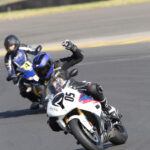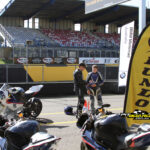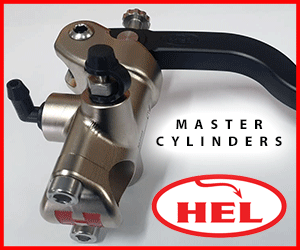Recently I had the opportunity to spend a day with the largest non-competitive motorcycle events group in the southern hemisphere – California Superbike School (CSS). The school’s motto is ‘discover the art’, which roughly translates to ‘learn how to corner safer… and faster’.
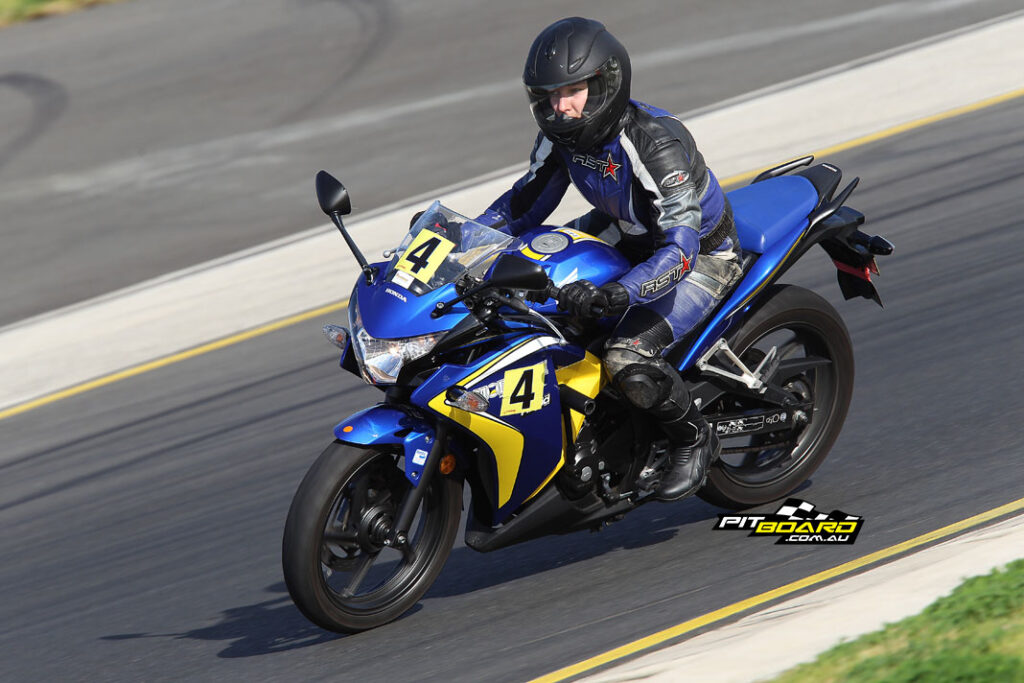
There are four levels of advanced rider training offered at CSS all designed to teach you step by step how to improve the stability of your bike around a corner by refining riding technique. I enrolled for Level 1, which teaches the fundamentals, gets you comfortable with the track and corrects bad habits.
Check out all of our rider training articles here…
My riding experience surmounts to a little over a year of inner-city Sydney commuting. So although I am quite proficient at dodging apparently blinker-less cars at speeds less than 80km/h, I had never graced the track. As the date for the event drew closer and closer, my trepidation grew and grew.
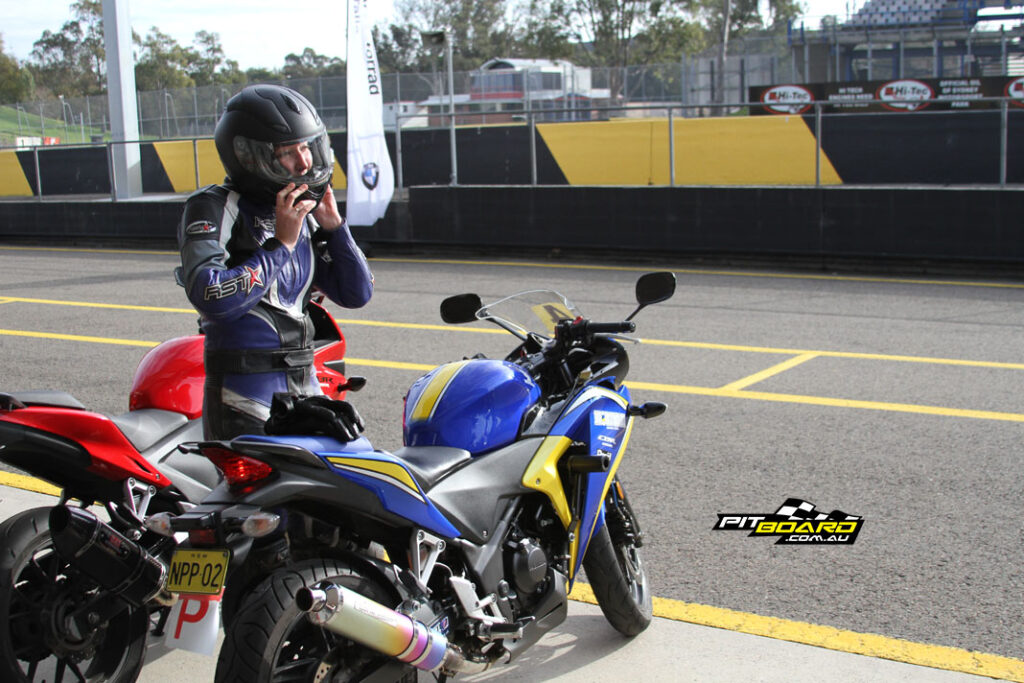
My pride and joy is a 2013 Honda CBR250R Moriwaki Edition, a bike that until the morning of the CSS day, I felt had more than enough power. Arriving at Eastern Creek Raceway at 7am sharp, my nervousness was compounded as my little bike seemed to shrink in the company of the other motorcycles lining up to be inspected by the CSS staff.
As I fretted about potentially being the only person to never have ridden on a track before, I struck up a conversation with some gentlemen waiting in line next to me. Both had been riding for over a decade, but had never set tyre to track either. Throughout the day I met a huge variety of people, mainly participating in Levels 1 and 2, and it became clear to me that CSS caters for every rider.
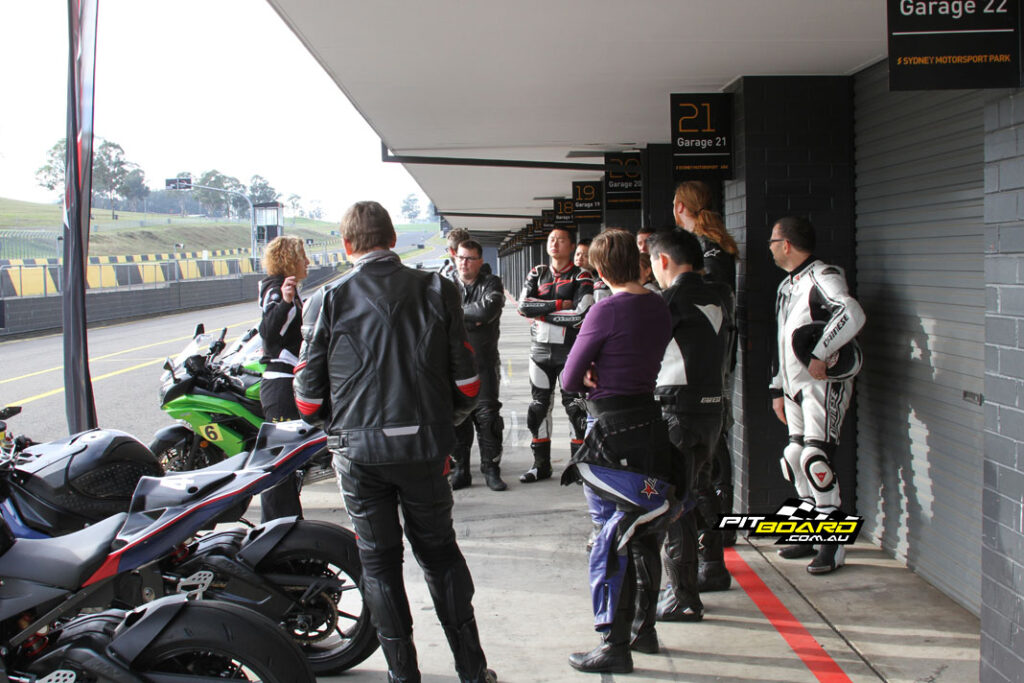
After my bike was inspected and deemed ‘track-worthy’, the charismatic Steve Brouggy, the co-founder and managing director of CSS, gave us an introductory safety briefing. Steve was quick to establish a sense of ease and excitement among the students, peppering his talk with jokes that bordered on inappropriate, but were nonetheless hilarious. After this initial talk, we were split into our respective classes and assigned coaches with no more than three students allocated to each coach.
Our group was the first on the track – a daunting prospect for any first-timer. The first session was an orientation lap, where we could only use fourth gear and absolutely no brakes. I was mildly terrified at this announcement, thinking it would be a virtually impossible task based on my winding, convoluted map of the track. These first laps were also designed to get us comfortable with the entry speeds of each corner of the track.
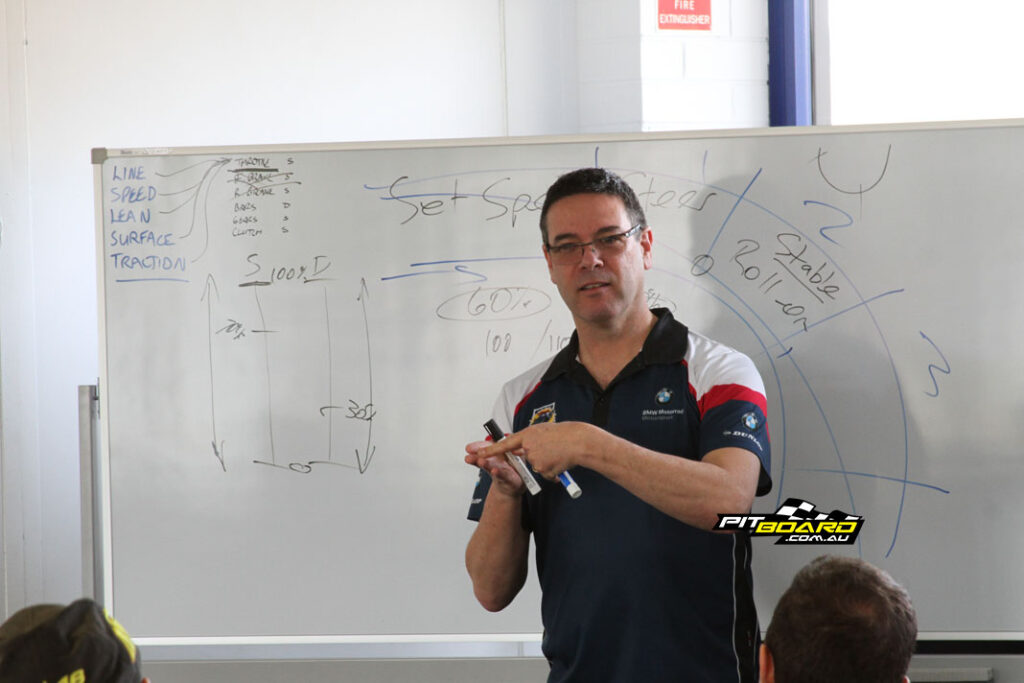
Shaking with adrenalin after the initial slow but nerve-wracking session on the track, we were marched directly upstairs for our first lesson with Steve – throttle control, arguably the most important control for cornering. On the track, the coaches would locate each of us in turn and ride ahead, signalling with a specific hand movement when and how much to throttle-on in the corner. Out of all the drills, this was probably the one I had least trouble with. I found my normal pattern of acceleration was similar to what my coach was instructing, if a little early in the corner. The second drill however, had a profound effect on my mindset and consequently on my riding.
In this drill we studied turn points, or simply the spot you aim for in a curve that will give you the straightest line through the corner and the most predictable exit line. The turn points for each corner were marked with a white cross and on the first lap, all of the turn points felt very late in the corner and about a quarter of them felt nearly impossible to hit. It was then I learned that I had been inadvertently increasing the curve of my line around a corner by turning too early.
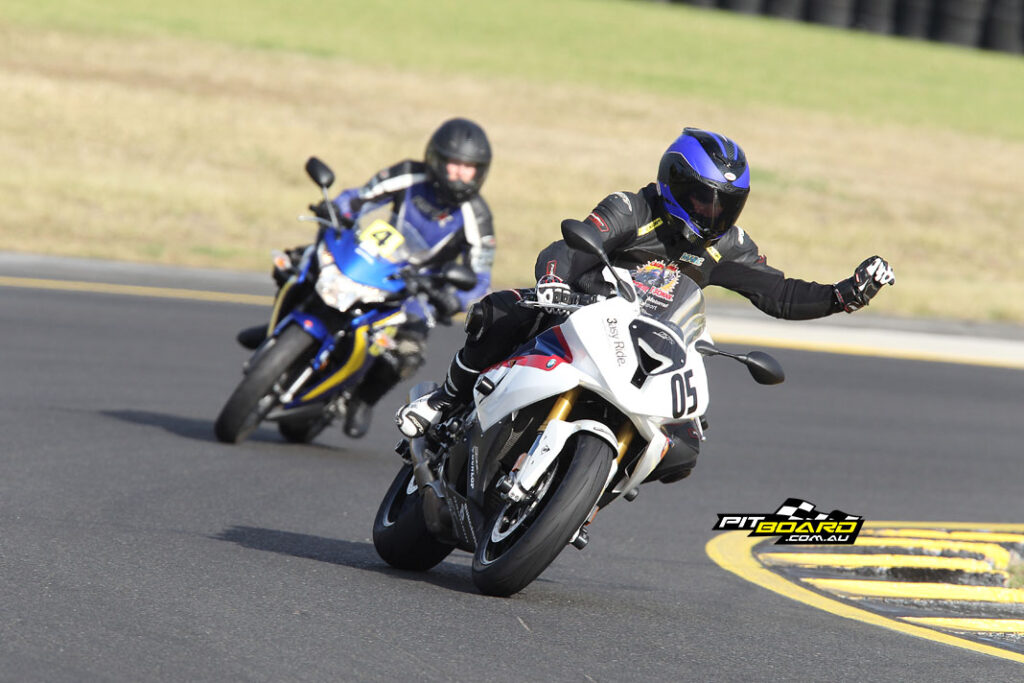
By the end of the 20-minute track session, I was getting accustomed to the new turn points with the most significant improvement being a tight finishing line, rather than the usual line, consistently wide and less-predictable.
Up until that point, I am ashamed to admit that I had never been aware of counter-steering. This drill was a revelation, and from talking to the other participates, I believe it was enlightening for everyone. The drill involved weaving at a constant speed down a straight line by consciously counter-steering. Two coaches watched from the start line and corrected positioning and technique. We all had to repeat the laps of the straight at least five times before the coaches were satisfied. Although the drill was tricky to get the hang of, once I had the hang of it, achieving the turn points on the track became easy as I learnt to quick steer later in the turn to avoid correcting in the middle of the corner.
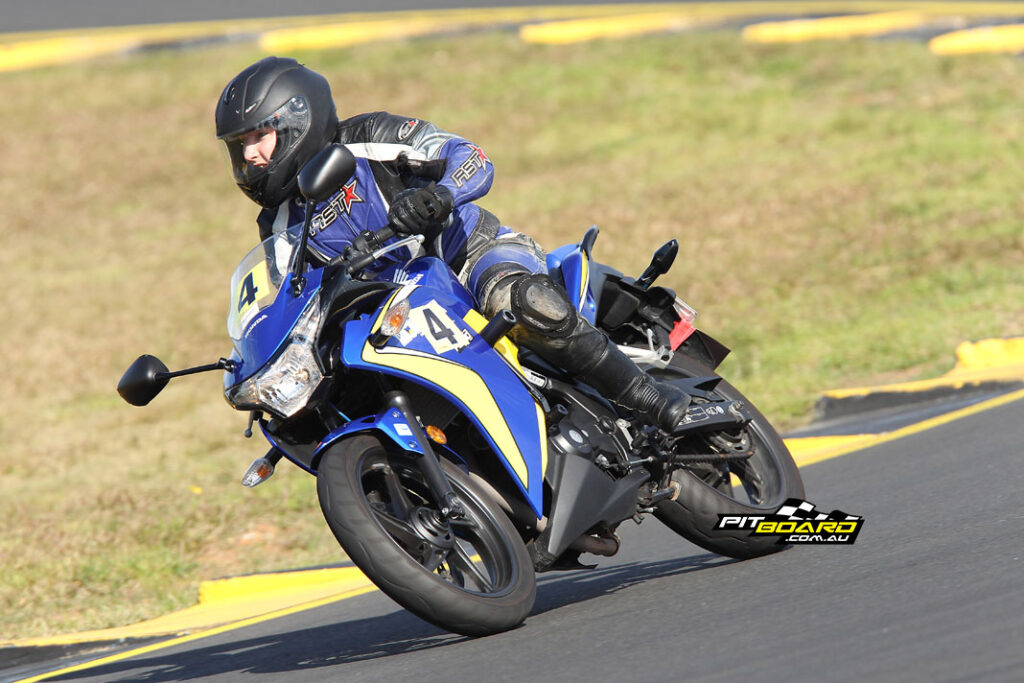
The next drill also had a profound effect on all the riders present. The drill was called ‘rider input’ and focused on allowing the motorcycle to have its head in a corner, not trying to fight against bike. All of us found that since we were concentrating hard to put all our learning into practice, as well as the fact that we were repeatedly putting our bodies into a stressful, adrenalin-ridden state, we tended to grip the handlebars for dear life, tensing our upper bodies.
As we discovered, this makes the vehicle unstable in a corner. A bike oscillates within a natural degree of lateral movement, particularly when headed around a corner. By allowing the motorcycle to move within its own framework by relaxing the grip on the bars and dropping the elbows into a relaxed state, the motorbike becomes perceivably more stable. Coming out of the infamous turn two hairpin, I audibly gasped in amazement at the difference in stability exiting the curve compared to the previous session. However old habits die hard and I still had to fight my body at each corner as it attempted to tense up at the prospect of leaning closer to the asphalt.
Early in the day I had felt the unexpected thrill of terror and then triumph as my boot scraped the ground around my favourite hairpin on the track (turn 9). The concentration I held on the track gave me a symbiosis with the bike and I didn’t even realise how far I was leaning until this sudden jolt.
Naturally, I freaked out and immediately backed off the throttle, ending up with a wide exit line. After this and as the day wore on, I felt as if I was actually decreasing my speed into the corners and each one began to feel laboured. I thought this may be a result of muscle fatigue after four separate adrenalin shots around the track. On the fifth and final drill, the reason for my discomfort became apparent. Since the second drill teaching us about turn points, I had had my attention focused too much on meeting the white crosses on the track. This meant as I approached the cross, I reduced entry speed too much and was tense moving into the corner. Drill five was called ‘two-step turning’ and focussed on teaching us to locate the turn point on the road, then once it is clear that you will hit that mark, change your eye line to focus on the apex of your corner.
“Once I understood this, all the other drills and skills I learnt throughout the day fell together, the corners felt much more natural and it became an immensely thrilling last hurrah around the track. I was cornering faster and with much more stability and I now had the confidence I was lacking previously.”
The first few laps on the track are frightening because the experience was completely foreign to me. I had never had somebody tape up my rear vision mirrors and speedometer and tell me ride – presumably at high speed – with no cars and your control of the motorcycle being the only potential hazard. Besides forcing myself to stop trying to check my mirrors, as the day wore on and with the help of Steve and the coaches I became immensely comfortable in this environment. There is something entirely euphoric about the experience. You become removed from your body as you execute a series of actions to bring you successfully around a corner at ludicrous speeds.
In your mind you know you are putting yourself in danger, but the risk is confined entirely to the accuracy of your actions. As a result, leaving at the end of the day to putt once more through Sydney traffic felt as foreign and dangerous to me as the initial laps around the track did at 8am that morning. As I grew accustomed once again to city riding, I found I had a new confidence in my abilities to handle my motorcycle.
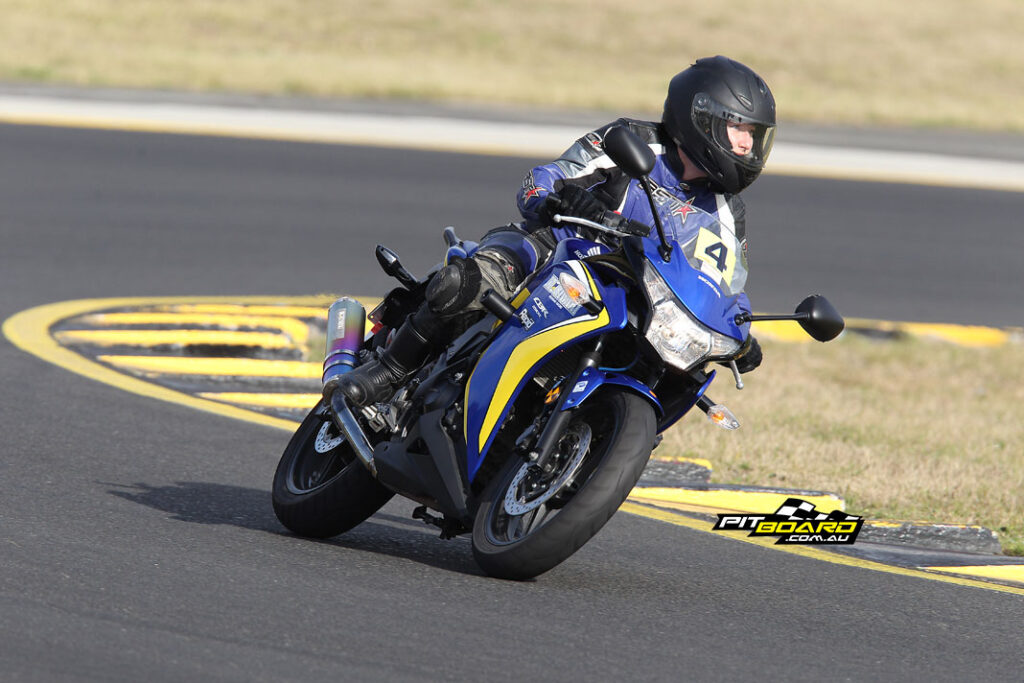
I found myself consciously applying each drill we learnt into my riding and felt my old habits – the ones I hadn’t realised were there – gradually dissipate. The school exceeded my expectations 10-fold and I was utterly spent after the long day – both mentally and physically – having crammed so much information into a single day. The skills learned are so important to any rider, I fervently believe everyone with a newly acquired full riders licence should participate in a day at California Superbike School and set their standard of riding early for an inherently safer and undoubtedly more enjoyable ride.


